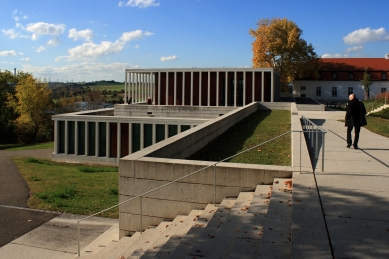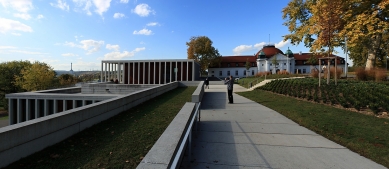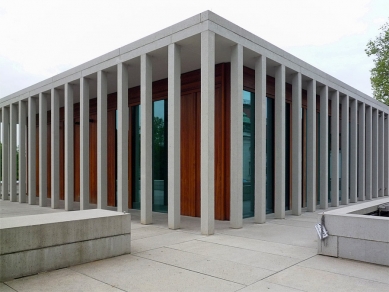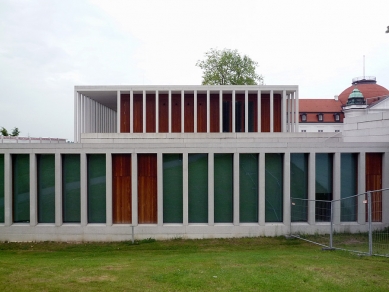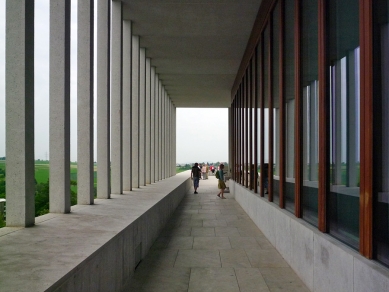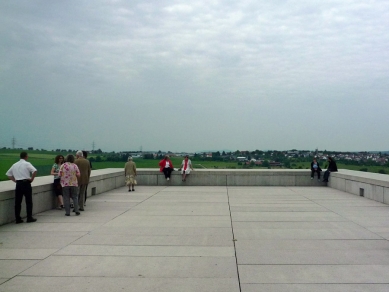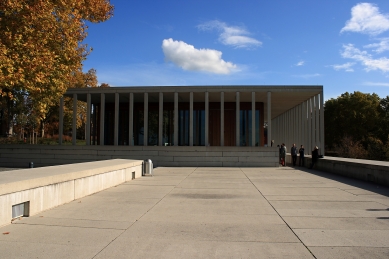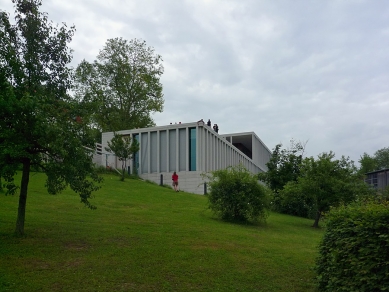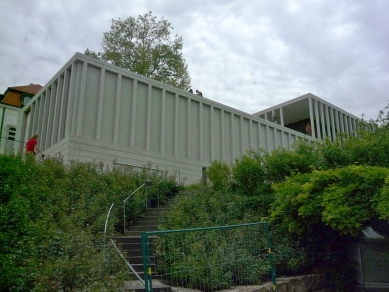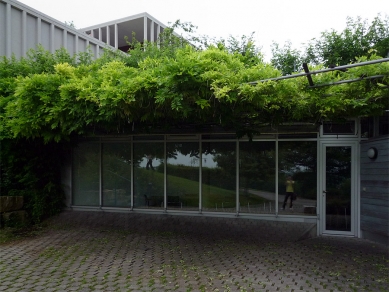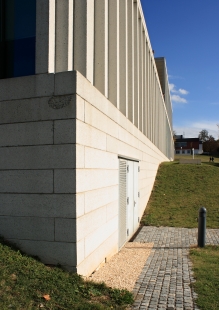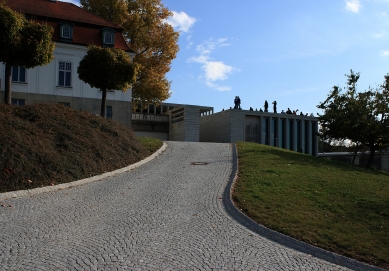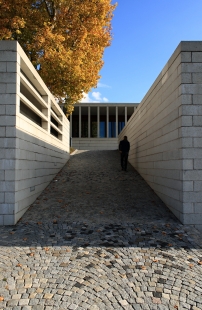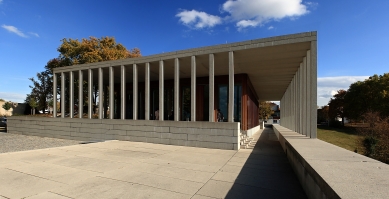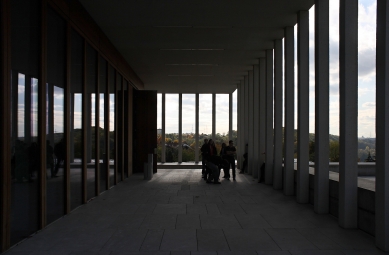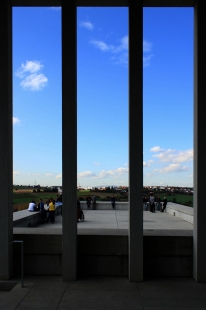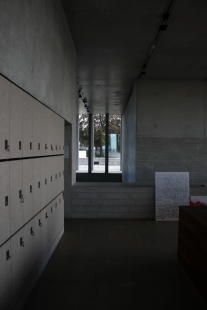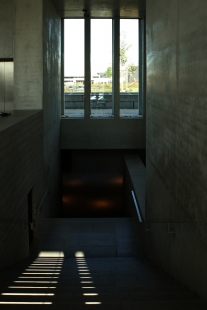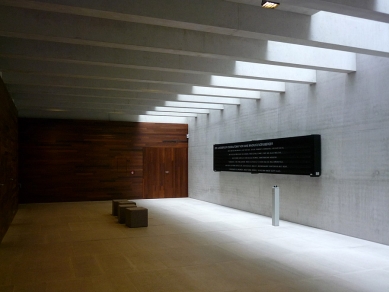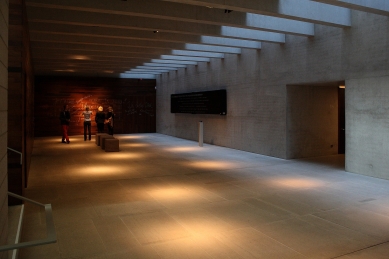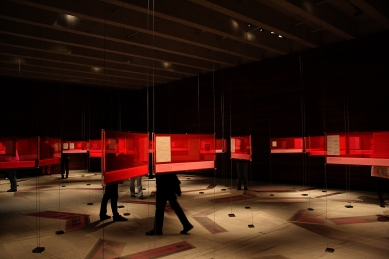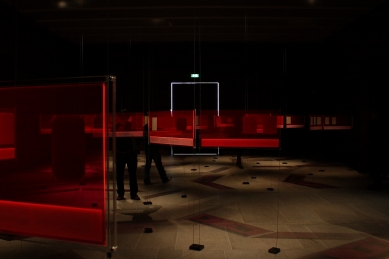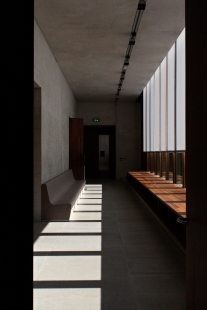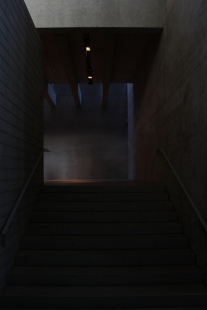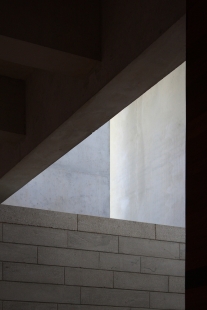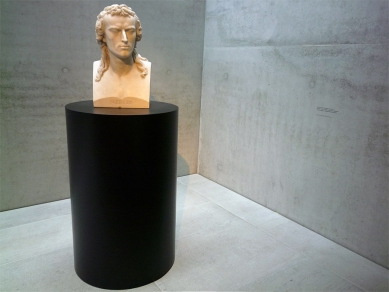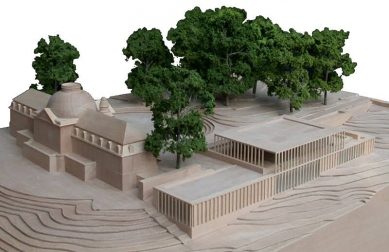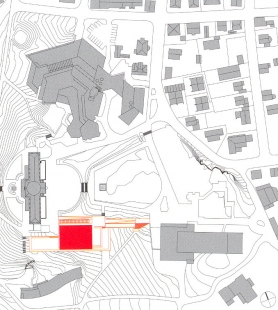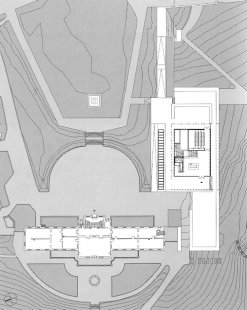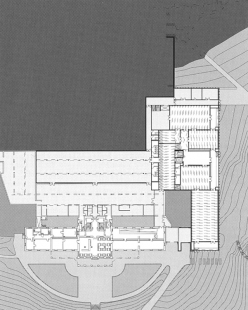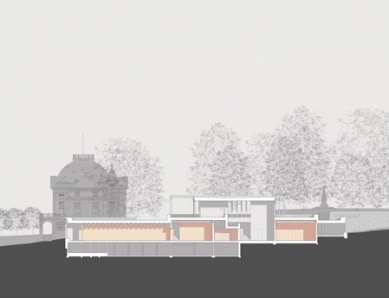
Museum of Modern Literature

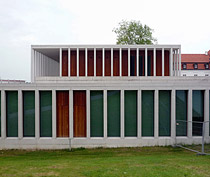 |
Embedded in the topography, the museum reveals different elevations depending on the viewpoint. By utilising the steep slope of the site, terraces allow for the creation of very different characters – an intimate, shaded entrance on the brow of the hill facing the National Schiller Museum with its forecourt and park, and a grander, more open series of tiered spaces facing the valley below.
A pavilion-like volume is located on the highest terrace, providing the entrance to the museum. The interiors of the museum reveal themselves as one descends down through the loggia, foyer and staircase spaces, preparing the visitor for the dark timber-panelled exhibition galleries, illuminated only by artificial light due to fragility and sensitivity of the works on display.
At the same time, each of these environmentally controlled spaces borders onto a naturally lit gallery, balancing views inward to the composed, internalized world of texts and manuscripts with the green and scenic valley on the other side of the glass.
A clearly defined material concept using solid materials (fair-faced concrete, sandblasted reconstituted stone with limestone aggregate, limestone, wood, felt and glass) gives the calm, rational architectural language a sensual physical presence.
David Chipperfield Architects
Following re-unification, texts of German authors previously dispersed to east and west have been brought together in this new museum. The entrance sequence is brilliant. The visitor crosses an open terrace overlooking the valley, then negotiates a series of shallow steps to enter through giant hardwood doors. It is at the moment of descent that the building shows its pedigree – a sense of a progression to somewhere beyond, combined with a rich but selective palette of materials and illuminated with subdued top lighting. The route concludes in the permanent collection. Here glass cases containing original manuscripts form a magical flickering landscape.
There are many things to praise about this building - the architect’s control and discrimination in the choice of materials has by now become a signature - but above all it is in the handling of the ‘difficult whole’ that the building excels. This is a building that is simultaneously rich and restrained, a trick Chipperfield pulls off as well as any architect working today. But it is in the handling of the ‘difficult whole’ that the building excels.
To draw people to look at books and manuscripts they cannot read more than a page or two of (except by arrangement) was a tough brief. Chipperfield has responded by making a building that is in itself a half of the visitor’s experience; if not a temple then a shrine to the soul of a literate nation.
statement from Stirling Prize judges
0 comments
add comment


